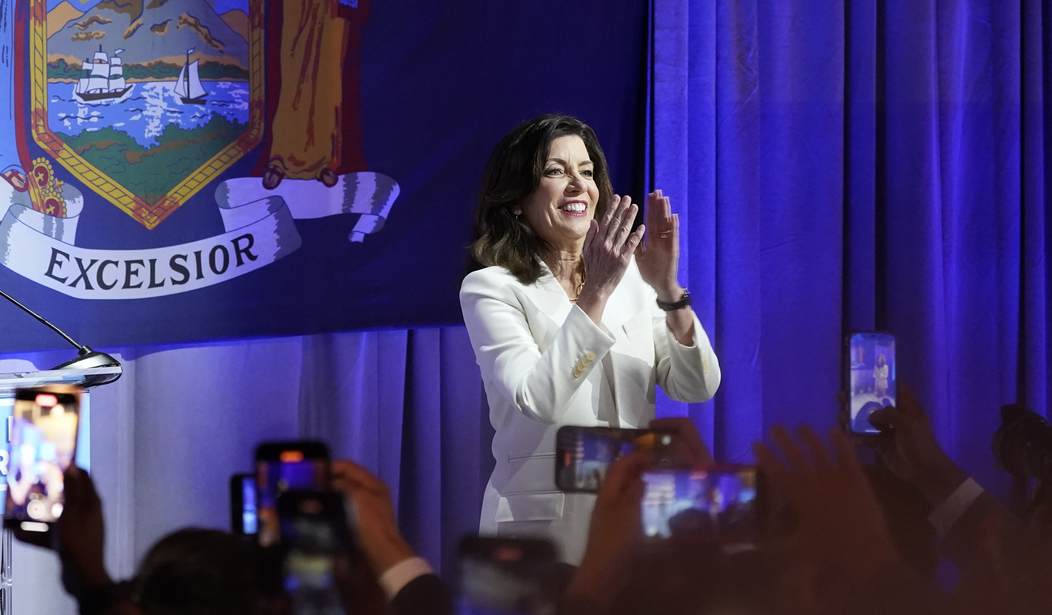Being of a certain age, I didn’t even attempt to stay up late enough to see all of the close races around the country called. That turned out to be a good choice because quite a few of them are still undecided this morning. That reality raises a lot of questions that some of the more cautious prognosticators were posing before the polls had even opened yesterday. What happened to the red wave, to say nothing of the “red tsunami” that many felt was on the way? Election day wasn’t a total washout for the GOP, but it was hardly the national “realignment” that many of us were anticipating. With those mixed results as a backdrop, let’s take stock of what we can look forward to between now and the next presidential election.
We still don’t know for sure who will control either chamber of Congress, though it currently appears that the GOP may take back the majority in the House. Even if they do, it’s going to be such a narrow divide that a couple of spoilers in marginal districts could shoot down any major Republican initiatives and overriding presidential vetos will be completely off the table, assuming the Democrats can remain unified. The Senate may well remain under Democratic control despite many polling outlets predicting that the Republicans would land with as many as 53 seats. Georgia is probably headed for a runoff, with Raphael Warnock having put in a stronger-than-anticipated showing. Similar tales are unfolding in many states. Underlying all these results is a stronger stream of ticket-splitting than we’ve seen in quite a few years. So is that a hopeful sign or a weakening of the two major parties? Honestly, it could be both. (NY Post)
As of Wednesday morning, four states have still not yet called major races which could determine which party will control the House of Representatives and the Senate.
Races in Wisconsin, Arizona, Nevada, and Georgia are still too close to call, the Associated Press reports.
Democrats currently hold 46 seats in the Senate, and Republicans hold 47 seats.
The Senate is currently sitting at 48/48, with the winning party needing 51 seats to take control of the Senate.
So far, 30 of 35 seats up for election have been called in the Senate.
New York (where I live) is one of the best examples of ticket-splitting. Those who followed my pre-election coverage will recall that I never held a belief that Lee Zeldin would be able to overcome the Democrats’ two-to-one registration advantage and boot Kathy Hochul out of the governor’s mansion. Many of the late polls put the race close enough to get our hopes up, but it appears that Hochul hung on for a narrow victory. (Zeldin has yet to concede as of this morning, but most of the votes that have yet to be counted were early, mail-in ballots where the Democrats have dominated thus far.)
But at the same time, New York Republicans are poised to increase their number of seats in the House from a relative handful to at least seven and likely ten. That doesn’t happen unless quite a few people were willing to grant Kathy Hochul another term but marked their ballots for a Republican in their congressional race. Party line voting was less of a trend than in previous elections.
We saw something similar in Georgia. Brian Kemp seems to have solidly defeated Stacey Abrams in line with what the last set of polls indicated. But Raphael Warnock looks to have edged out Herschel Walker by a slim margin, likely sending the race to a runoff where he could still emerge victorious. There was clearly more ticket-splitting going on there as well.
Granted, a lot of that ticket-splitting may have come from independent voters and we always knew they would be the ones to decide an election as close as this one turned out to be. But they can’t have accounted for all of it. So is “party loyalty” and allegiance to a “brand” in American politics on the decline? And if so, is that necessarily such a bad thing? At least among Republicans, there is obviously still some divisiveness centered around Donald Trump. I’m not talking about the “never Trumpers” here. I’m speaking of the rank-and-file Republicans who remain willing to support Trump, but turned their noses up at some of the candidates he chose to endorse. And that’s particularly true when he selected neophytes who were largely unvetted in political terms. (Herschel Walker once again comes to mind.)
We also learned that a lot more people are willing to accept a deteriorating status quo in America than I would have anticipated. Whether that is being spurred by tribal alliances or shifting values is impossible to say. But I had assumed (apparently incorrectly) that a lot more people would reject the current culture of increasing crime rates and massive inflation triggered by unwise federal policies. The Biden border crisis also didn’t seem to sway nearly enough people to turn their backs on the Democrats and their policies. Why? That mystery may take a long time to sort out.
Perhaps we simply have a more informed but eclectic electorate than I sometimes give the country credit for, at least in terms of their personal preferences. Nobody, including Trump, should be able to tell any of us who we have to support. Each race is unique and different regions will rank their priorities regarding various issues differently. We don’t need one-size-fits-all elections. And we probably shouldn’t push for a system like that.








Join the conversation as a VIP Member